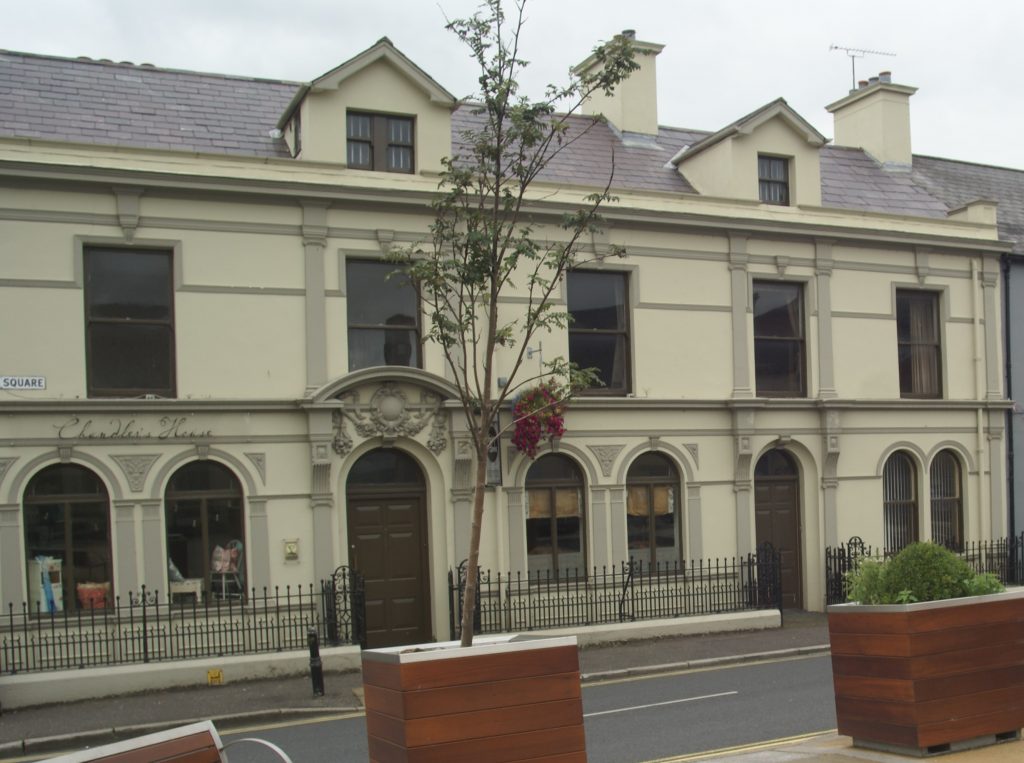Hibernian Bank/Bank of Ireland/Chandlers House-Church Square
The first known record of a building on this site is from a 1778 map of Rathfriland and from a lease document between Laghlin Fegan and the Meade estate. Little is known about Laghlin Fegan, but his son John Fegan, born in 1793, set up a candle and soap-making factory, later running Rathfriland Post Office. The business was successful, with few competitors and raw materials available from two tanneries existing in Rathfriland. The factory provided employment for many workers processing the raw materials and also in soapbox-making for a shilling a day. John Fegan also owned 19 dwelling houses extending westward along the north side of John Street, needed to meet demand for accommodation in a fast-growing population, prior to the famine years.
By 1861 the property had altered with a large 2.5 storey dwelling containing a Post Office, grocery store and dwelling. There were probably two buildings.
On his death in 1861 John Fegan left the dwelling house to his wife Mary, and his sons were bequeathed premises and stock to carry on the business. John Fegan’s success had allowed him to buy properties and parcels of land around the town, one of which became Kiltariff Hall built in 1880 by his eldest son William, and still in family ownership. William Fegan also inherited the dwelling house in Church Square from his mother Mary in 1873, later leased in 1874 by his son Richard Fegan to the Hibernian Bank.
The original premises consisted of a pair of 19th century houses, one of which was converted into a Bank Hall in 1875, later remodelled in 1911 to create the Manager’s House which remained occupied until circa 1982. In 1975 it became the Bank of Ireland, closing in June 2013. In 2014 it was purchased by Rathfriland Regeneration Company and was officially opened as a community facility on 12 August 2014 by Mrs GME Shannon née Fegan, great granddaughter of John Fegan. Chandler’s House is currently being restored and repurposed by Rathfriland Regeneration Company.

